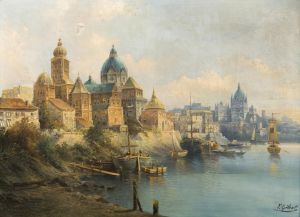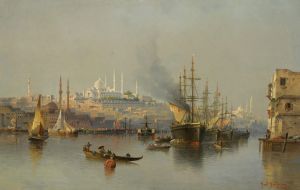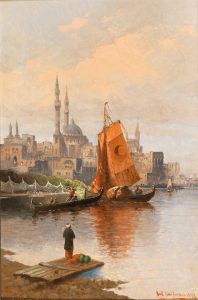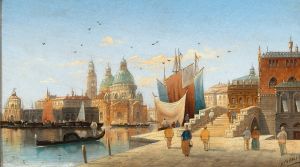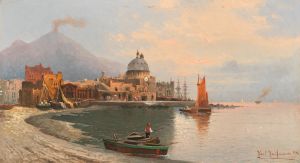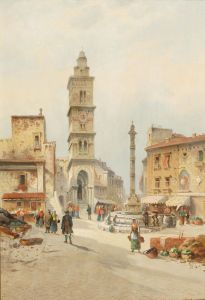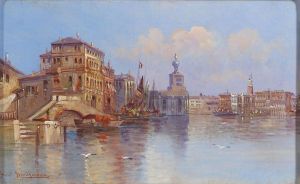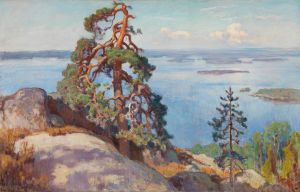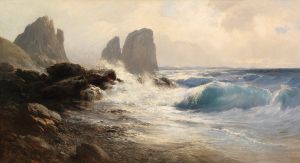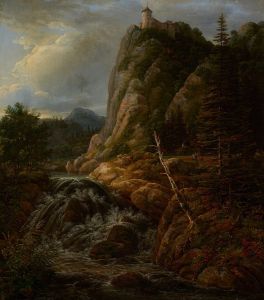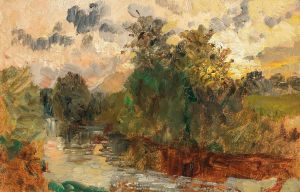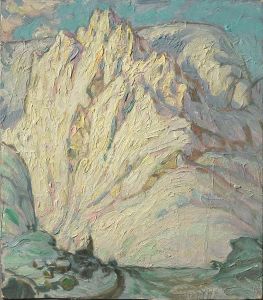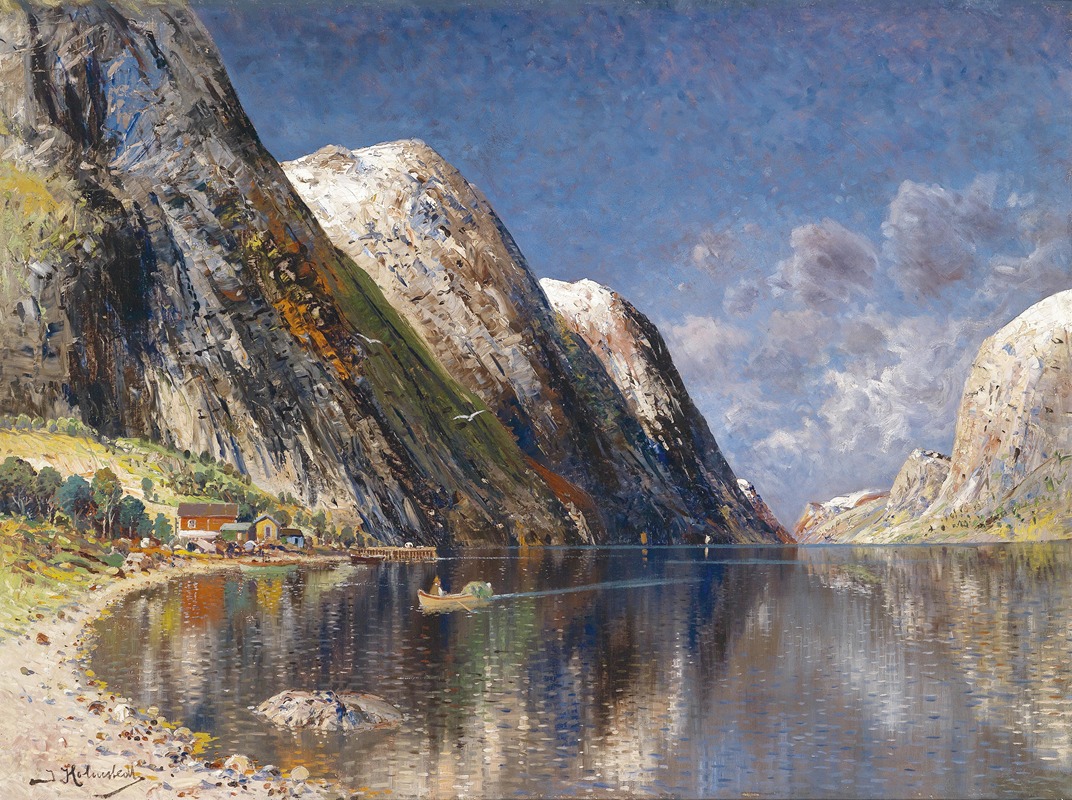
Drontheim Fjord
A hand-painted replica of Karl Kaufmann’s masterpiece Drontheim Fjord, meticulously crafted by professional artists to capture the true essence of the original. Each piece is created with museum-quality canvas and rare mineral pigments, carefully painted by experienced artists with delicate brushstrokes and rich, layered colors to perfectly recreate the texture of the original artwork. Unlike machine-printed reproductions, this hand-painted version brings the painting to life, infused with the artist’s emotions and skill in every stroke. Whether for personal collection or home decoration, it instantly elevates the artistic atmosphere of any space.
Karl Kaufmann (1843–1905) was an Austrian painter known for his detailed landscapes and cityscapes, often depicting scenes from various regions of Europe. One of his works, Drontheim Fjord, showcases his talent for capturing natural beauty with precision and atmosphere. The painting portrays a view of Trondheim Fjord, located in central Norway, which is one of the country's most significant and scenic fjords.
Kaufmann's style is characterized by a meticulous attention to detail and a romanticized depiction of landscapes. In Drontheim Fjord, he employs a combination of soft light and rich colors to highlight the serene and majestic qualities of the Norwegian fjord. The painting likely reflects the artist's interest in Nordic landscapes, which were a popular subject among European painters during the 19th century. This interest was fueled by the Romantic movement, which celebrated the sublime beauty of nature.
While specific details about the creation of Drontheim Fjord are not widely documented, it is consistent with Kaufmann's broader body of work, which often included scenes from Scandinavia, Italy, and other parts of Europe. His paintings were frequently signed with pseudonyms, a common practice among artists of the time who worked for art dealers and galleries. However, Drontheim Fjord is attributed to him under his real name.
Trondheim Fjord, the subject of the painting, is Norway's third-longest fjord, stretching approximately 130 kilometers. It has historically been an important waterway for trade and transportation, as well as a source of inspiration for artists and writers. The fjord's tranquil waters, surrounded by rolling hills and dramatic landscapes, make it a fitting subject for Kaufmann's artistic vision.
Karl Kaufmann's works, including Drontheim Fjord, are valued for their ability to transport viewers to picturesque locales and evoke a sense of wonder about the natural world. His paintings remain part of private collections and occasionally appear in art auctions, where they continue to be appreciated for their technical skill and aesthetic appeal. Beyond this, specific historical records or critical analyses of Drontheim Fjord are limited, leaving much of its context to be understood through Kaufmann's broader artistic legacy.





